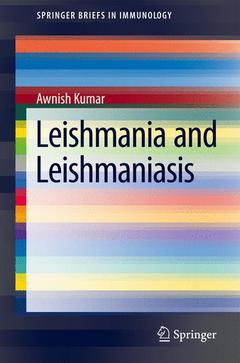Description
Leishmania and Leishmaniasis, 2013
SpringerBriefs in Immunology Series, Vol. 3
Author: Kumar Awanish
Language: English
Subjects for Leishmania and Leishmaniasis:
Keywords
Publication date: 09-2013
83 p. · 15.5x23.5 cm · Paperback
83 p. · 15.5x23.5 cm · Paperback
Description
/li>Contents
/li>Comment
/li>
?Leishmania-related illnesses remain among the world?s deadliest neglected tropical diseases, affecting approximately 12 million people in 88 countries. The mortality rate is substantial, contributing to nearly two million disability-adjusted life years. As more is understood about this parasite and its effects, work toward prevention, control, and treatment continues apace. Leishmania and Leishmaniasis will address the parasite and its attendant disease, which manifests in three syndromes: Visceral (VL), Cutaneous (CL) and Mucocutaneous Leishmaniasis (ML). The morphology and life cycles of the various species will be among the topics addressed in Part One. Part Two will focus on immunology, including host-immune response to Leishmania infection, cross-immunity between the different species and adoptive transfer of immunity. Parts Three and Four will address how Leishmania invade and survive, the clinical features of the disease, and its diagnosis. Drugs, vaccines and treatment will be thoroughly explored, including experimental models of therapeutics. Leishmania and Leishmaniasis will provide a thorough examination of a parasite, the illnesses it causes and the misery it continues to visit upon large segments of the population.?
Historical background of Leishmania and leishmaniasis.- Risk factors and definition of the problem.- Types of leishmaniasis.- Global status of visceral leishmaniasis.- Status of visceral leishmaniasis in India.- Morphology and Life cycle of Leishmania donovani.- Vectors and transmission of the disease.- Clinical symptoms of visceral leishmaniasis.- Control strategies of the disease.- Leishmania/HIV co-infections.- Host Immune response to Leishmania infection.- Cross-immunity between different Leishmania species.- Adoptive transfer of immunity.- Cutaneous leishmaniasis.- Mucocutaneous Leishmaniasis.- Visceral Leishmaniasis.- Post Kala-azar dermal Leishmaniasis.- Drugs against leishmaniasis.- Antimonials and Leishmaniasis.- SAG treatment, failure and resistance in Leishmania.- Vaccines against Leishmaniasis.- Strategy in practice for vaccine development against Leishmanisis.
Comprehensive study of Leishmania and Leishmaniasis Addresses various aspects, including morphology and life cycles of the Leishmania species Expansive attention to immunological perspective
© 2024 LAVOISIER S.A.S.




